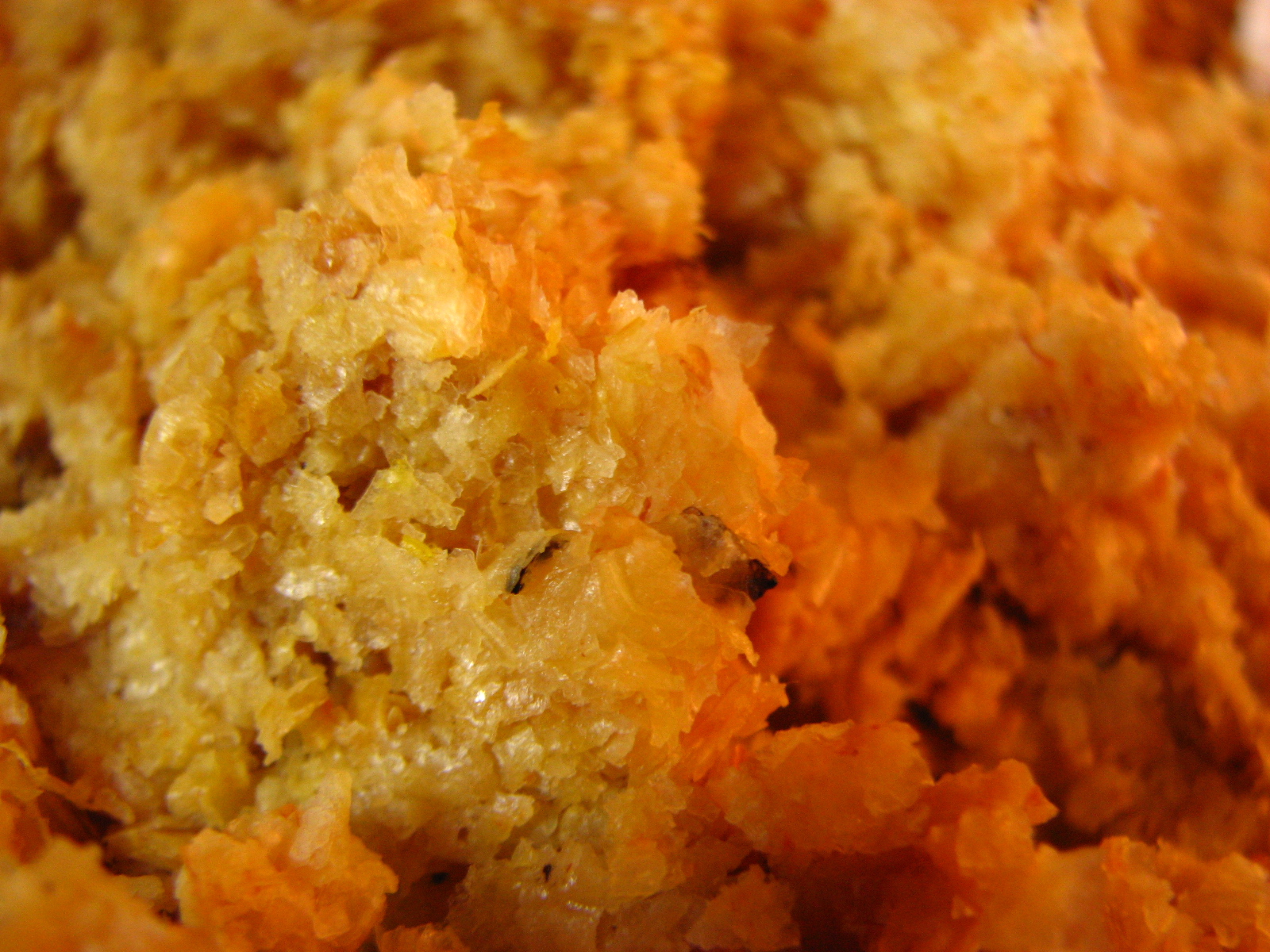Two weeks ago Nathan brought fresh raw honey home from work. He processed the honey at our house and set aside the wax and the cappings for me. I researched a little online on how to make beeswax and was daunted. Many people said that beeswax will ruin your pots, makes a mess of your kitchen and that wax is dangerous to melt because it is flammable. I delayed making the wax for two weeks and let the container of wax sit on the counter but then the honey in the wax started to ferment. So yesterday afternoon I decided I would make beeswax today.
First I needed to clean the wax so that I could get all the honey out before I melted it down. I put the wax in a square piece of muslin cloth and brought up the corners and made a sort of "pouch". I rinsed the wax by running warm water over the pouch and I also dunked it in a bucket of warm water. After the water running from the pouch was clear I put the wax on a cookie rack with muslin over the top of the rack and put the rack on top of a 9x13 pan to catch any water. After I cleaned all the wax I let it dry over night.
 |
| The wax drying |
 |
| Clean Wax |
Today I started making the beeswax by putting the cleaned wax in my double boiler. (I bought two aluminum pots yesterday just for making the beeswax.) I boiled the water and then put my pot with the wax in the larger pot. I made sure that the wax did not get too hot but that it was just hot enough so that it could melt.
 |
| Wax in double boiler |
Before I started melting the wax I prepared a couple of plastic containers for straining the impurities from the wax. You can use plastic yogurt containers or carton orange juice bottles. I found that the plastic yogurt containers worked better. Then I put a new knee high hose over the top of the container so that the wax would drain through the hose but the impurities would not get through the hose. I also put about an inch of water in the bottom of the containers so that the wax will form on top of the water.
 |
| Straining the wax |
 |
| Wax from the first container |
 |
| Wax from the second container. See the impurities in the wax? |
About an hour later the wax was solid and looked ready to be taken out.
The new bar of beeswax turned out so beautiful. The beeswax is very clean and it has a faint smell of honey :-)
Cleaning the pots was difficult because the wax does not come off. They looked cleaner than I thought they would but I definitely know why you would not want to use these pots for cooking dinner with :-)
I used boiling water and I tried to buff the wax off but I did not spend too much time on them :-)
It was a lot of fun learning how to make beeswax and I hope to be able to do it again!
Blessings,
~Rachel






Very cool!
ReplyDeleteWhat are you planning to do with the beeswax?
"It's none of your beeswax!"
DeleteWell actually, I am planning on making lip balm and maybe hand salve and soap if I have enough beeswax :-)
At the beginning, the wax looks like turkey stuffing. :P
ReplyDeleteBut the finished product is really beautiful, a total transformation! Very nice work. :)